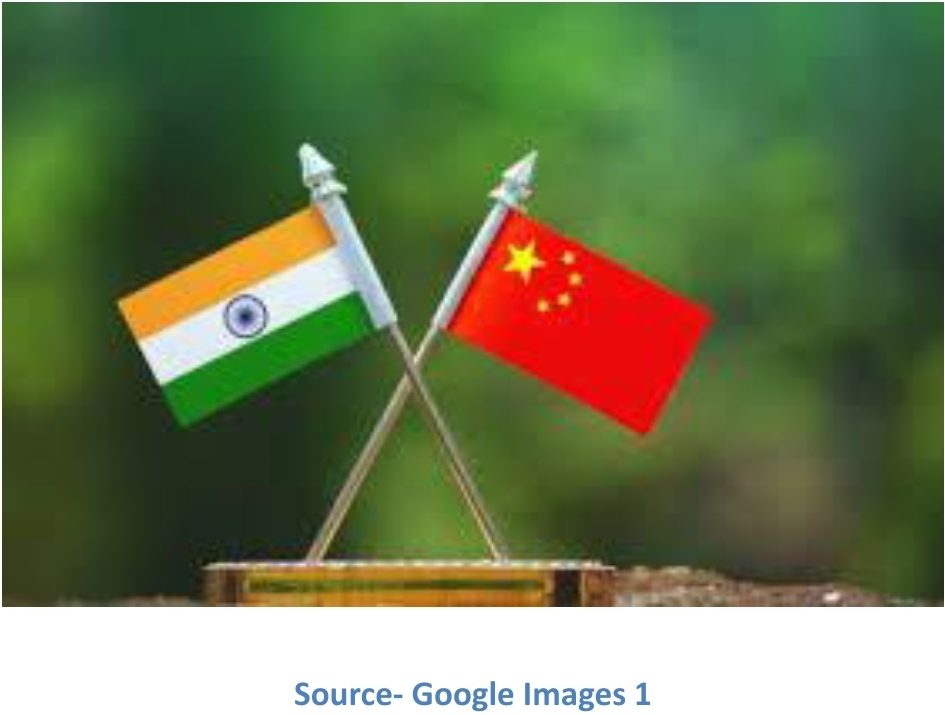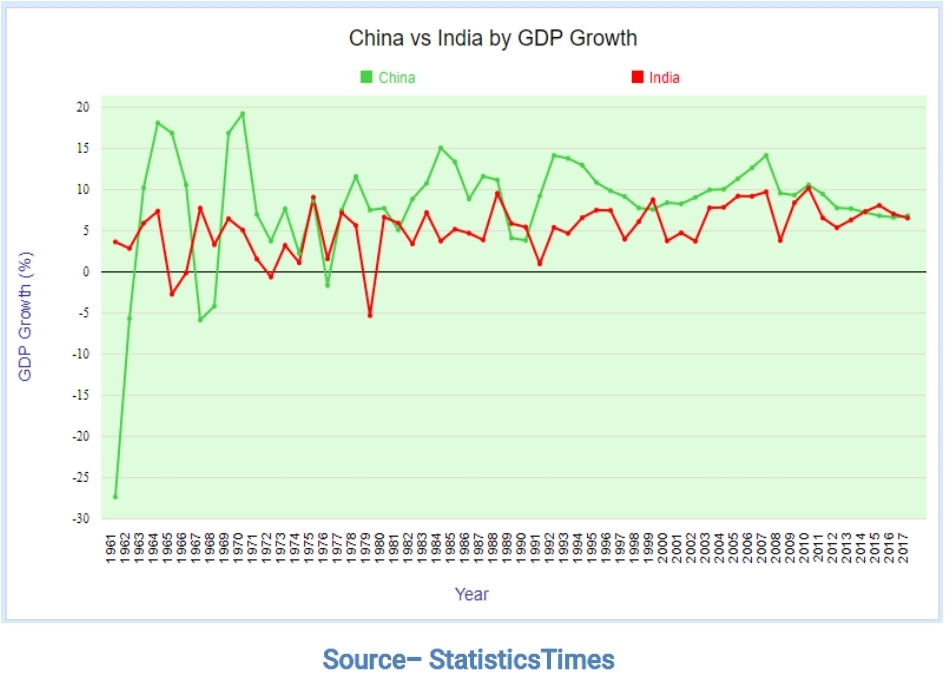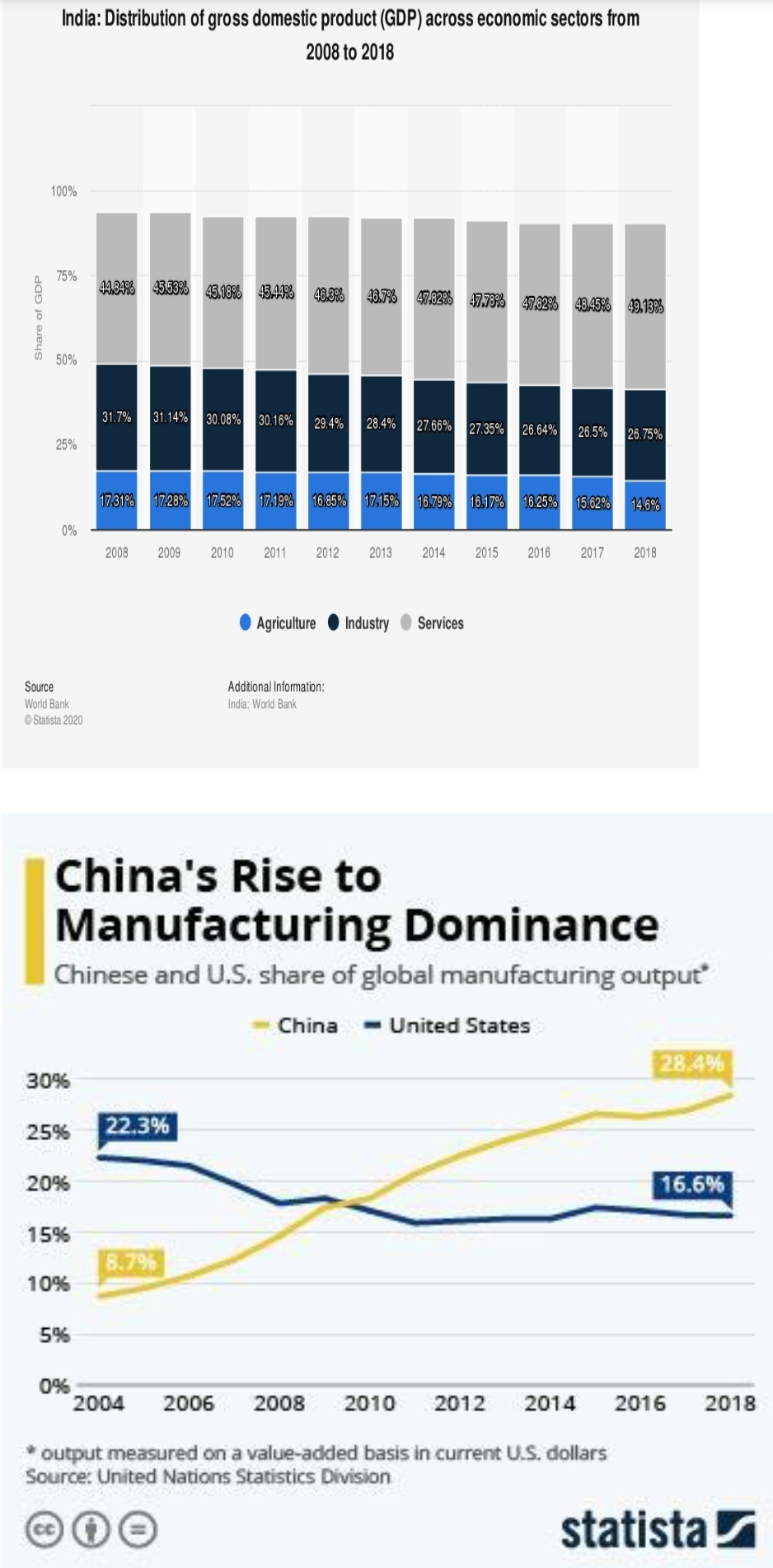China’s recent encroachment into Ladakh has sparked outrage in India, leading the public to demand the boycotting of Chinese products and services. It has also resulted in the Indian media and public to change its course of competition from our western neighbours to our mighty eastern counterpart which has further made the Indians question their rate of growth in terms of GDP, infrastructure, education, healthcare, employment, per capita income, trade, income disparity, manufacturing, and agriculture. Now, our aim is to understand from a comparative study between the two countries is the factors that have led to India lagging behind China in all parameters?
While India started its process of economic reforms in the 1990s, in comparison China began the process way back in the early 1960s investing heavily on their present education and health infrastructure. Around 30 years ago, India and China’s economy were almost at the same level with a huge difference in population.

The difference in growth caused by India’s diverse and vibrant democracy, and China’s homogenous system of Confucius culture, and one-party system which gives China an undue advantage over India. Example of this can be dam projects, where Chinese government had to build the giant Georges Dam, the construction of which started without much debate and compensations were given to those affected. On the other hand, when the Indian government had to build the Sardar Sarovar Dam, its development led to huge debates and discussions with social activists and members of civil society over the issues of peoples’ displacement and environmental issues. While both dams were equally controversial, one took years to be made, while the other’s development process was started immediately once the money was sanctioned by different corporate houses, and international organisations.
This difference is also visible even when you compare both countries’ GDP- while China crossed 1 trillion dollar in 1998, India crossed 1 trillion dollars in 2009 on exchanged rate basis. Per sector contribution to the Indian GDP are – Agriculture contributes 15.4 percent, Industry contributes 23 percent, Service sector contributes 61.5 percent. In case of China, Agriculture contributes 8.3 percent, Industry contributes 39.5 percent and Service Sector contributes 52.2 percent. The glaring difference that comes to light is employment – while China has become the world’s factory, India has become the world’s office, which means that India has more people employed in the Service Sector and China has more people employed in the Industrial Sector. The challenge clearly is the Agriculture Sector where more than 40 percent of the population is employed while the resultant contribution to GDP is less than 20 percent for more than 20 years.

China fundamentally has been a Communist country, therefore, focusing more on giving people employment opportunities. In India, since two decades we see no growth in employment opportuinties because growth in manufacturing has been stagnant. While the Service Sector primarily contributes to the GDP in India and China, it is the Manufacturing Sector that creates sustainable job opportunities which is very important for countries with a large working population. India’s manufacturing sector has taken up 15 percent of the GDP since the beginning of this century, and hasn’t picked up. While manufacturing contribution to the GDP may be low in China, it has helped in giving people sustainable jobs and in decreasing income inequality in China – this has increased per capita income and led to China exporting more goods and services to other countries establishing its predominance in the South East Asian region.
Raghuram Rajan, Former Governor of the Reserve Bank of India (RBI) suggested that India will surpass China’s growth if it continues in the path of reformers in coming decades. But, that requires the people to make the right decision when going out to vote in elections every 5 years – government that does not divide, but focus on key issues that will take India towards economic and political prosperity that will in-turn lead to social change.

Article written by-
Shreya Fotedar.
Reference :- Statista.com, Macroscan.org, Nap.edu
Image reference: Google
